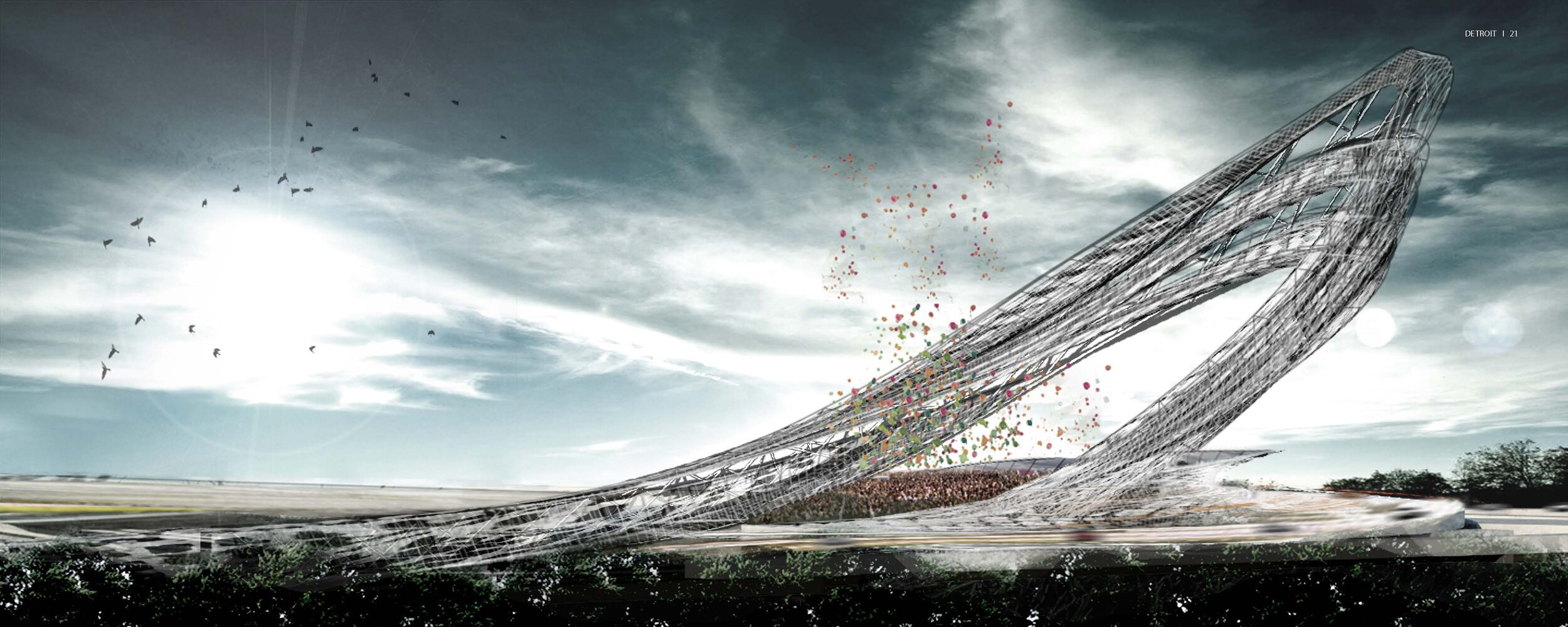
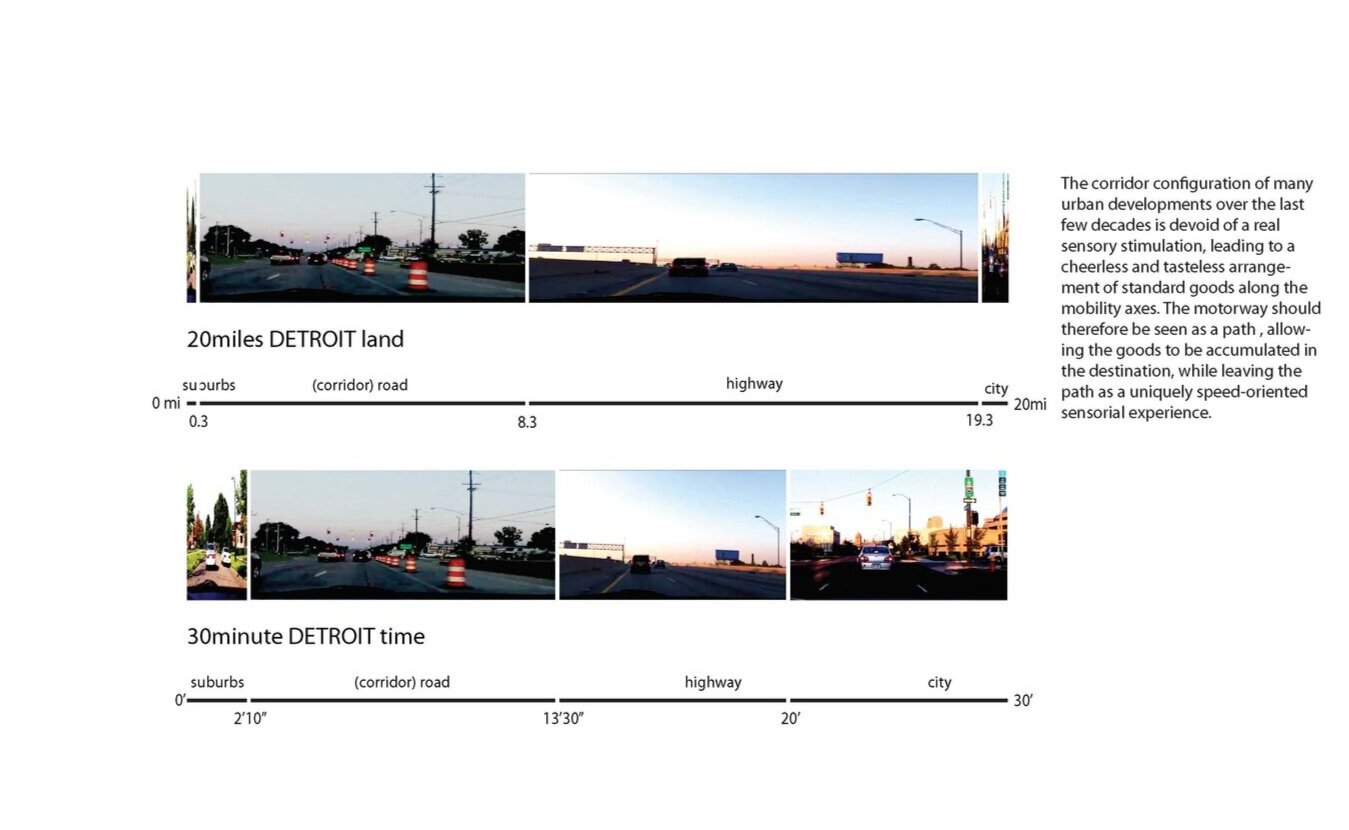
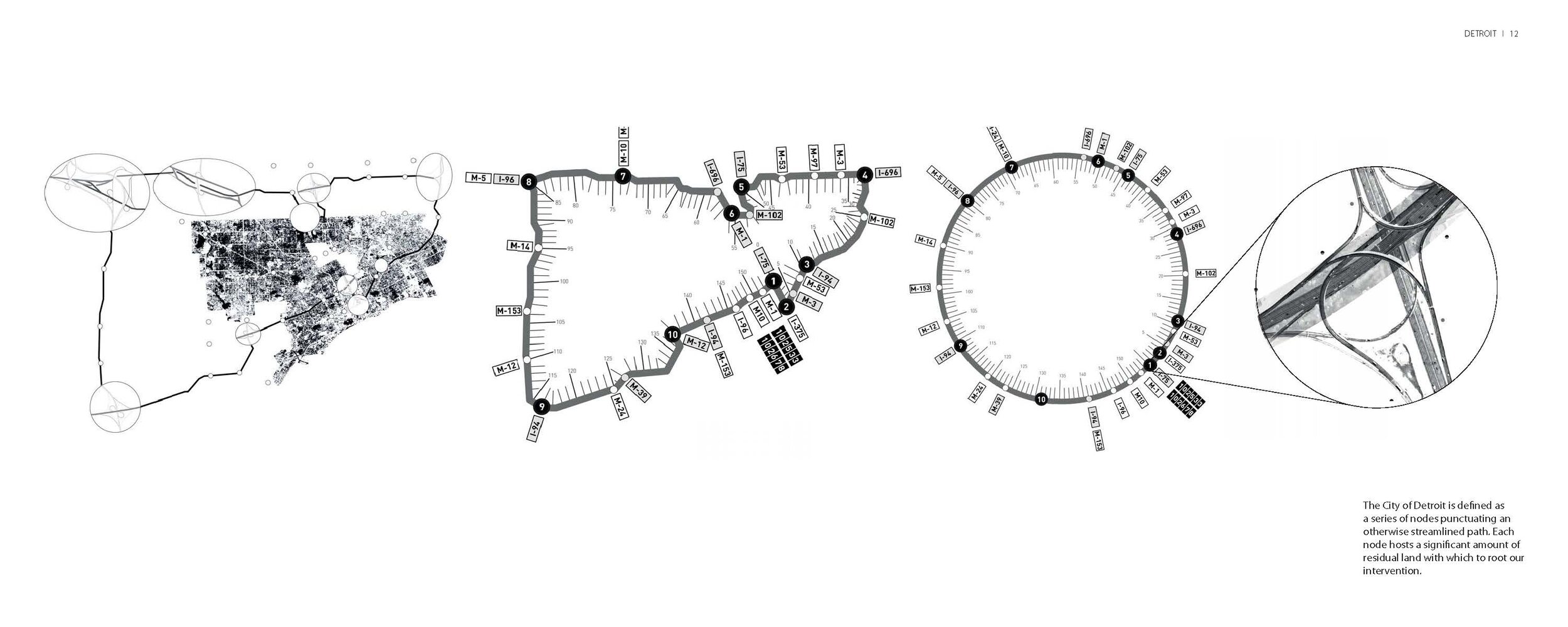
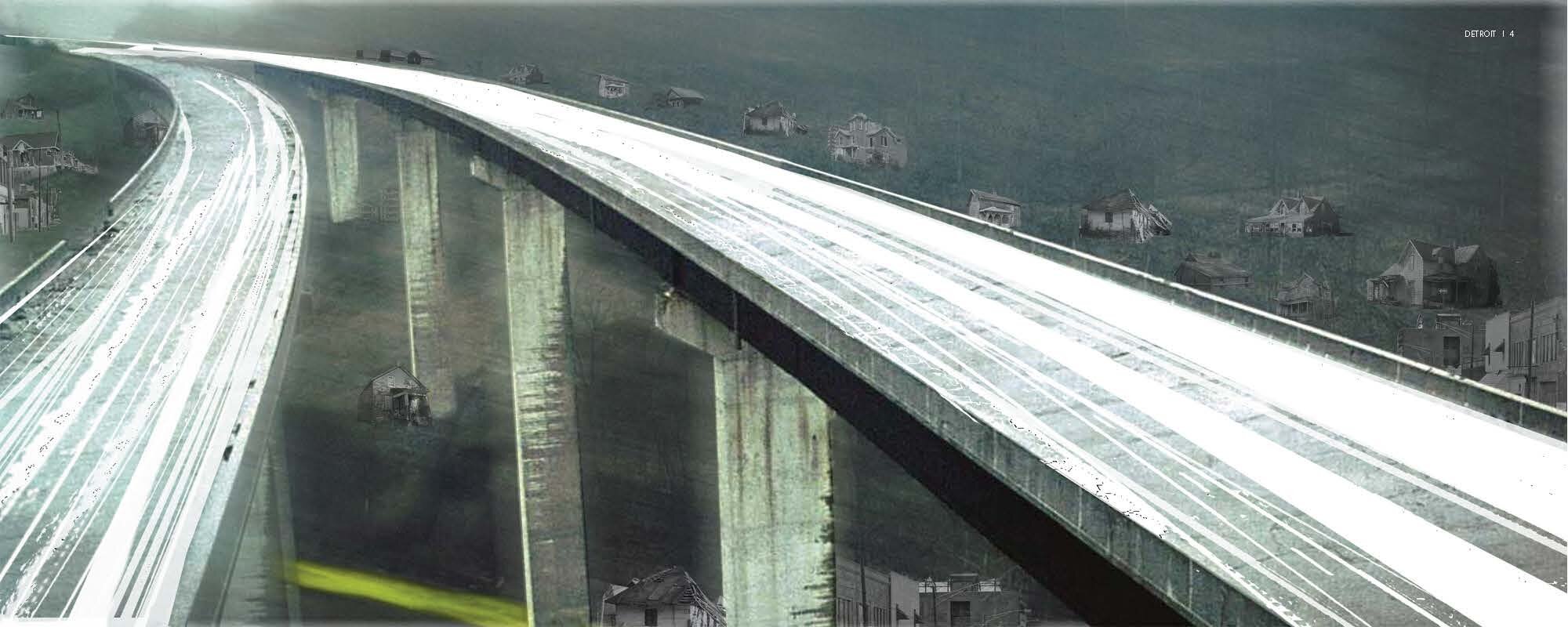
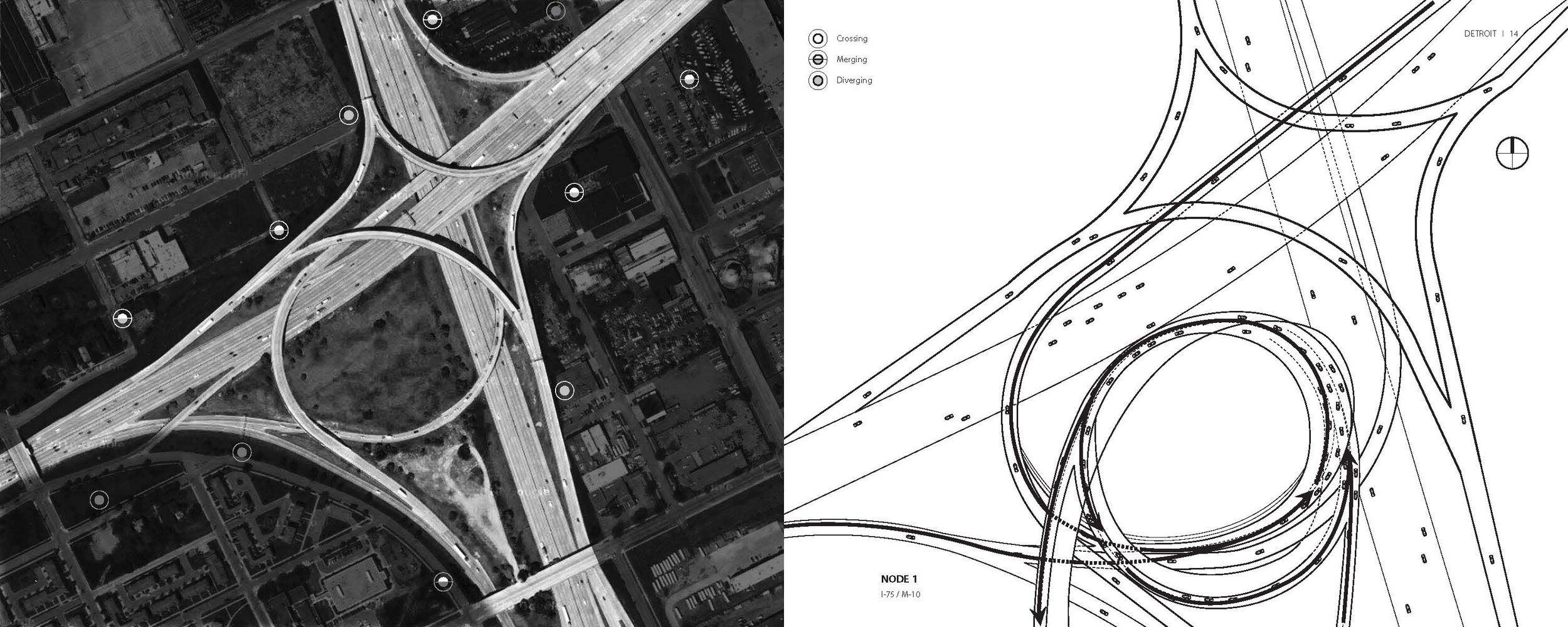

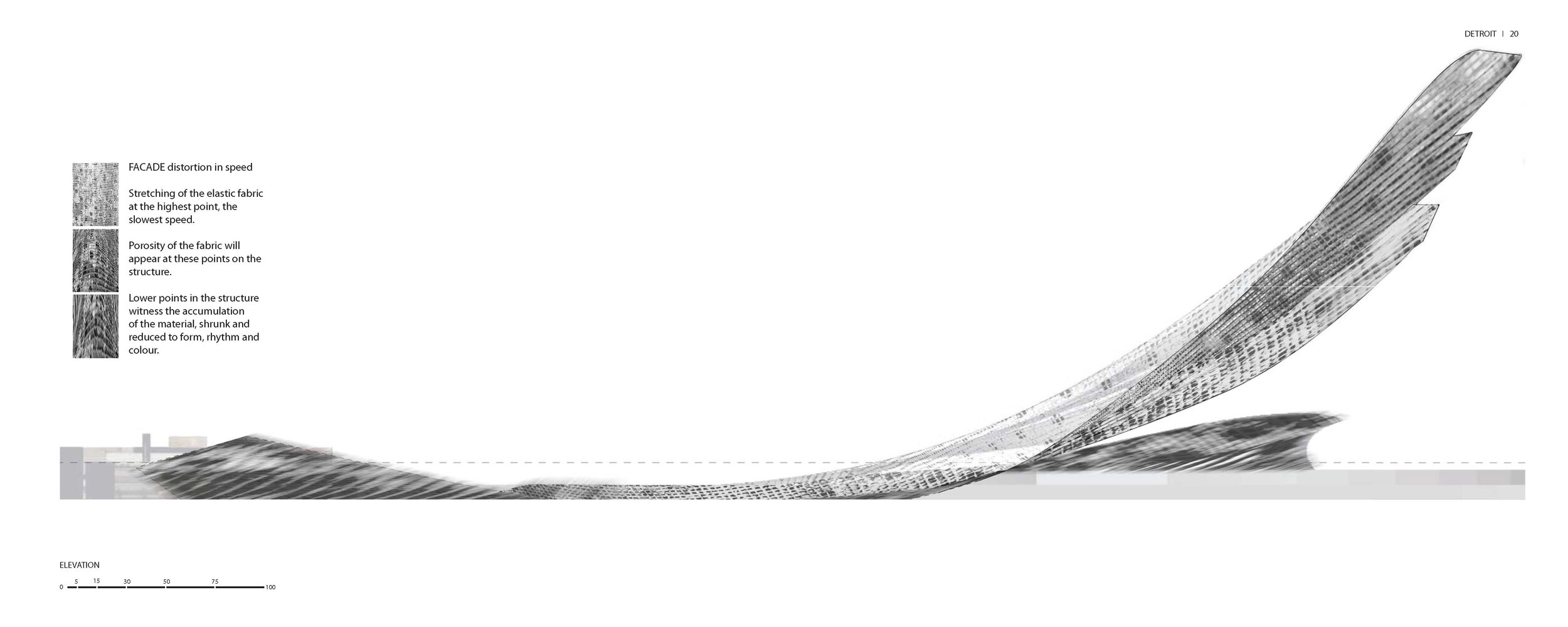
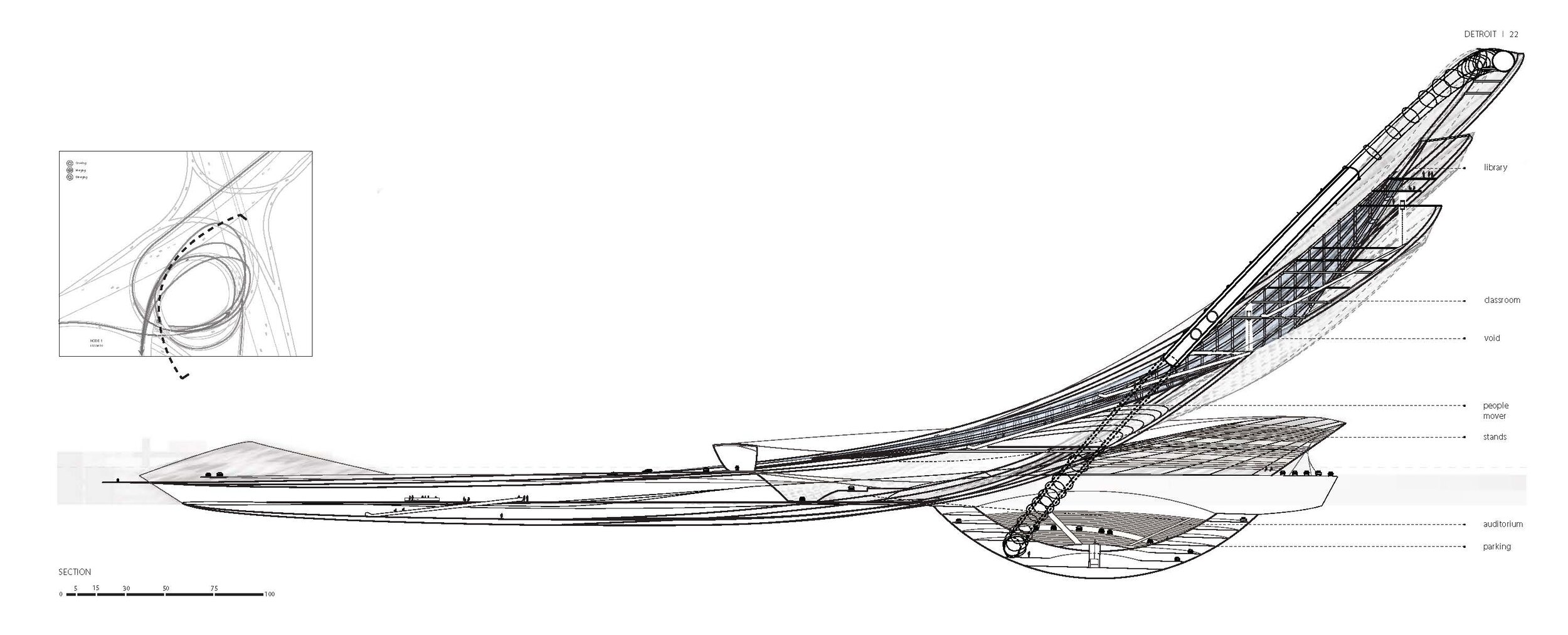
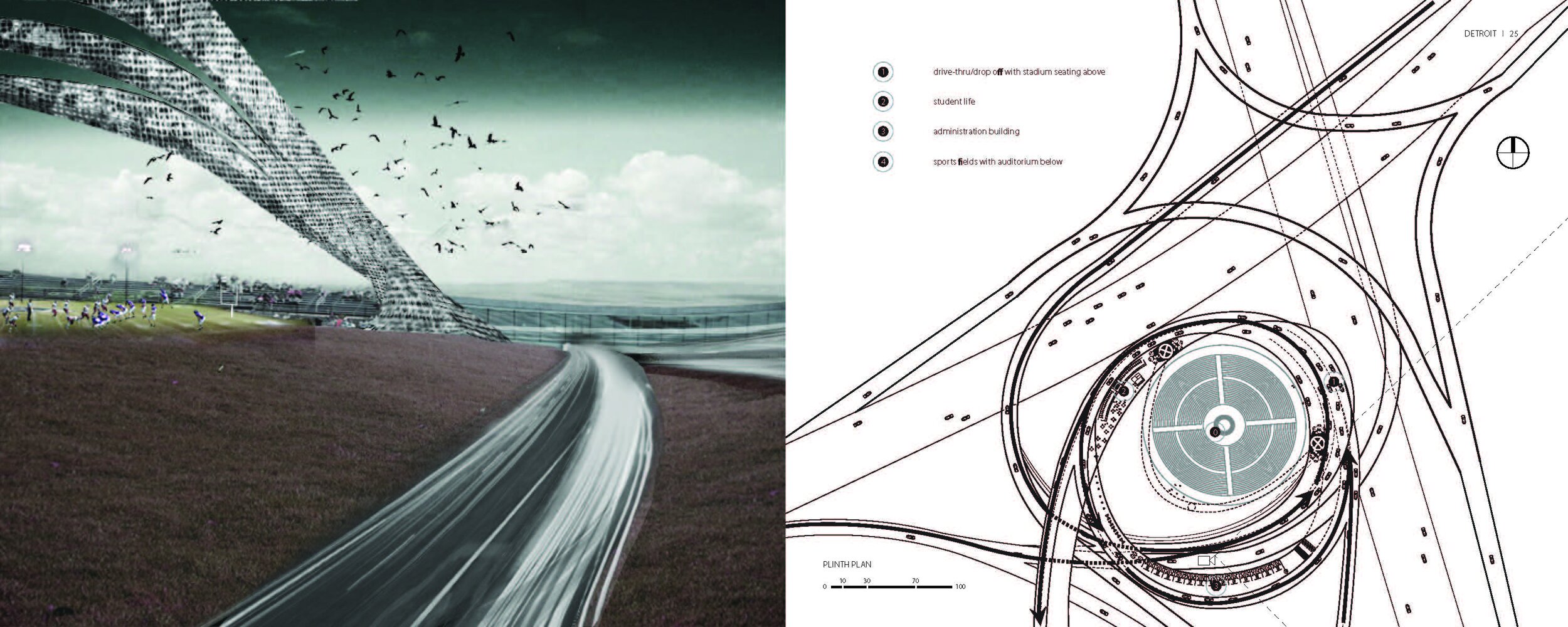
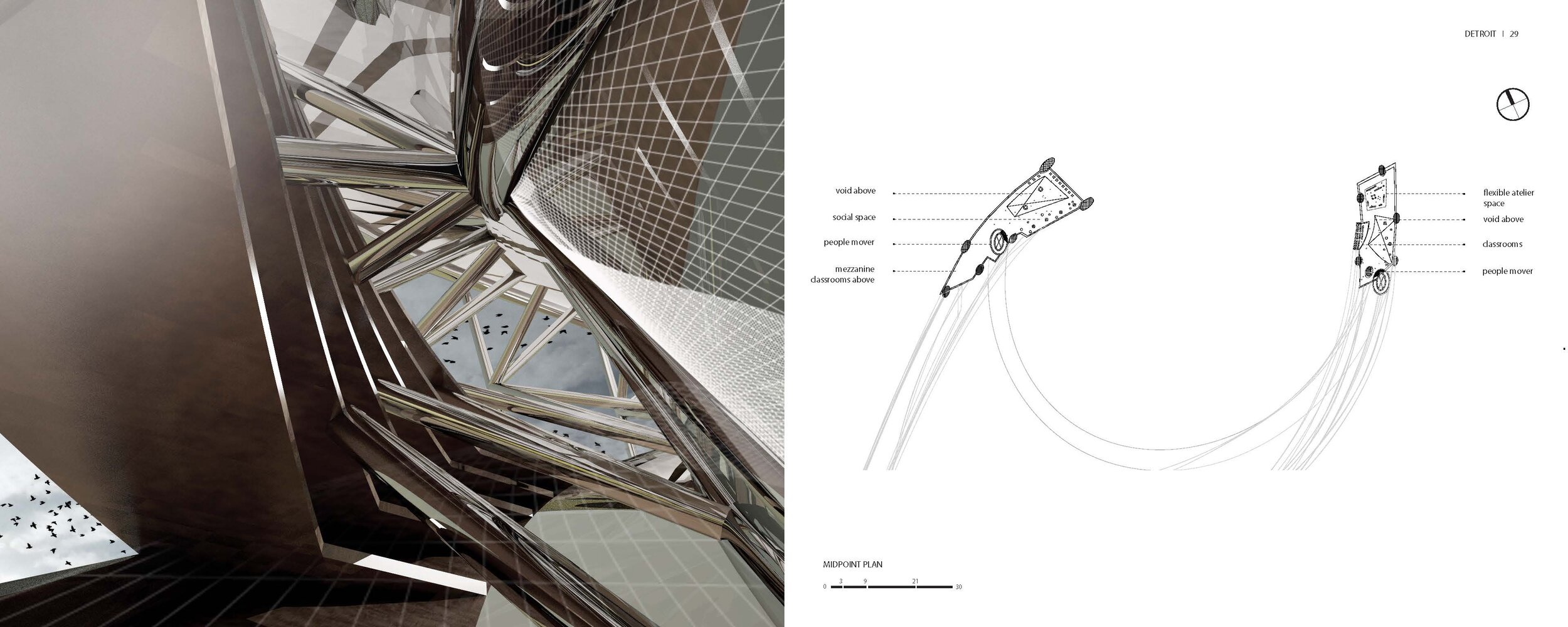
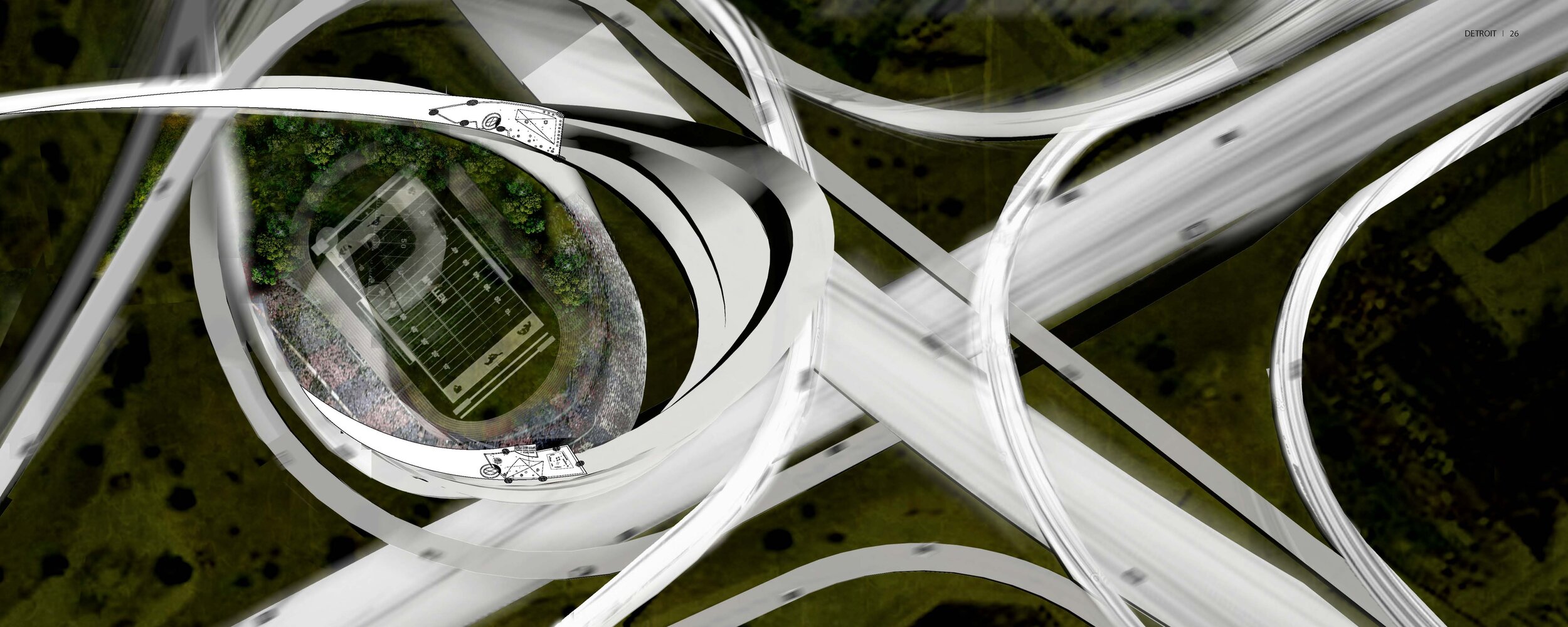
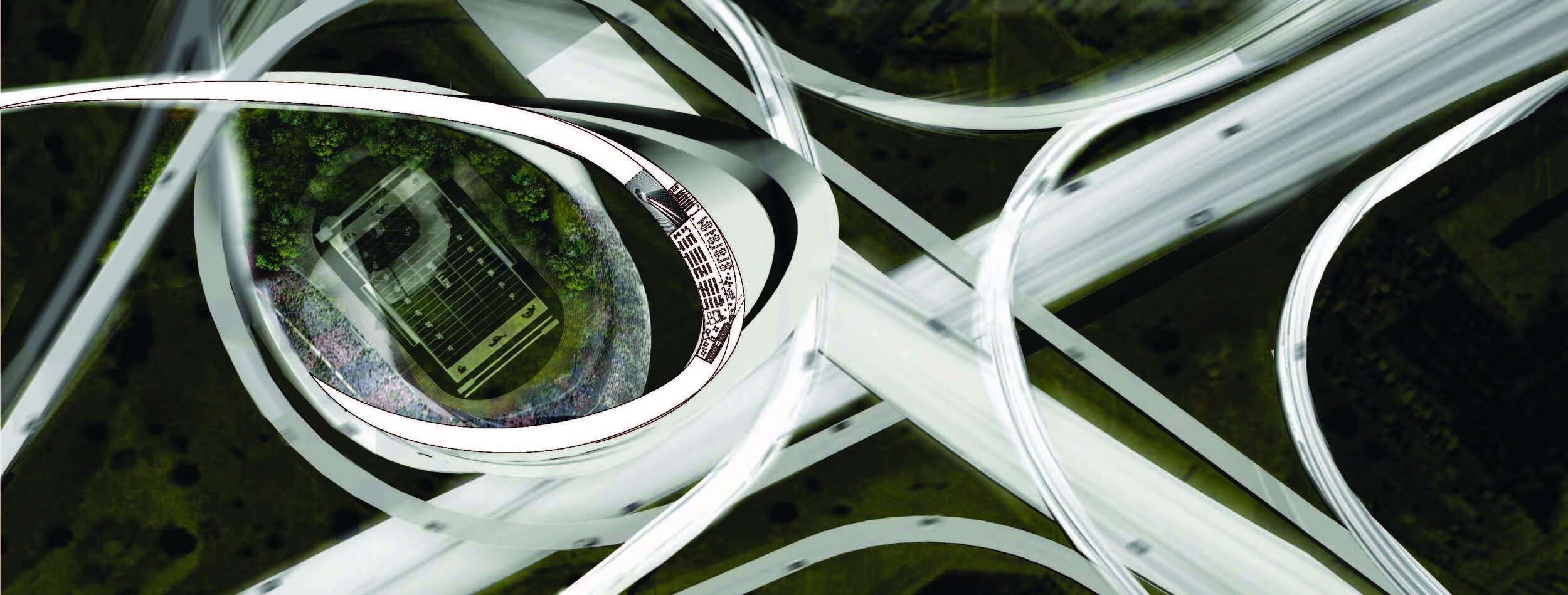
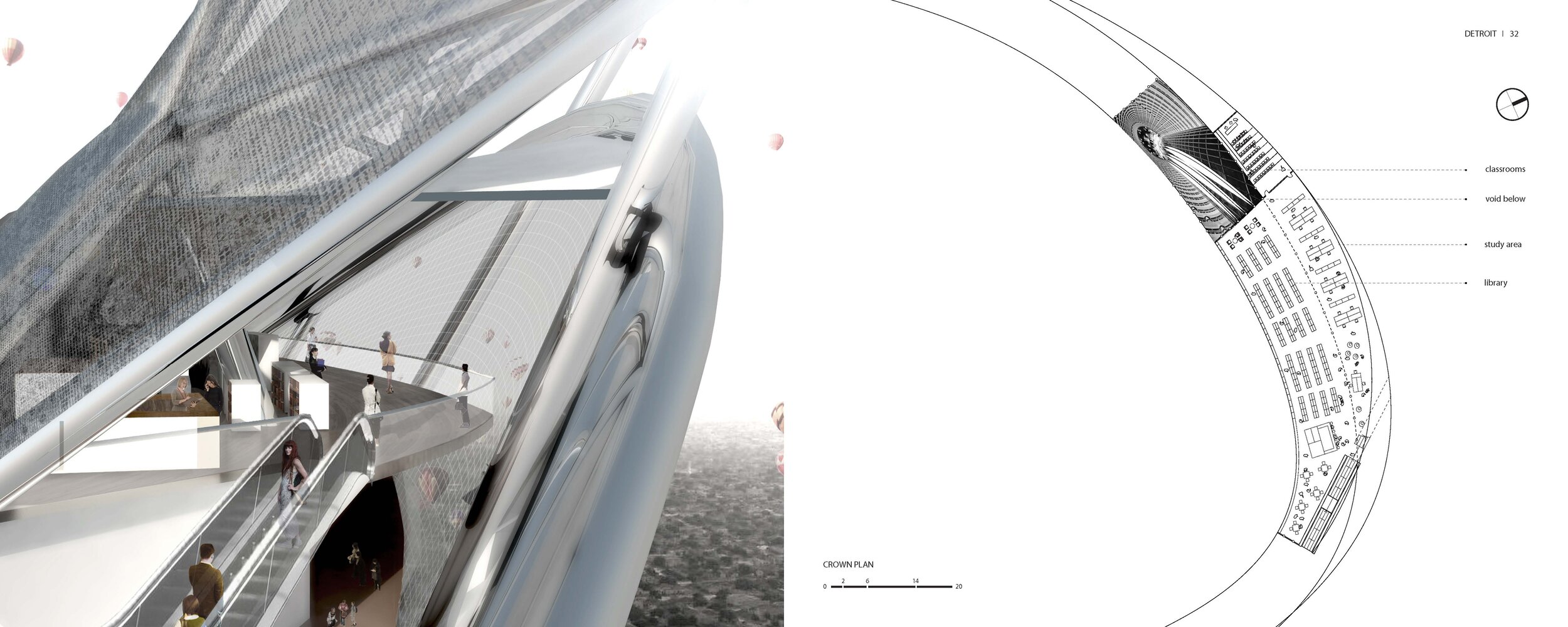
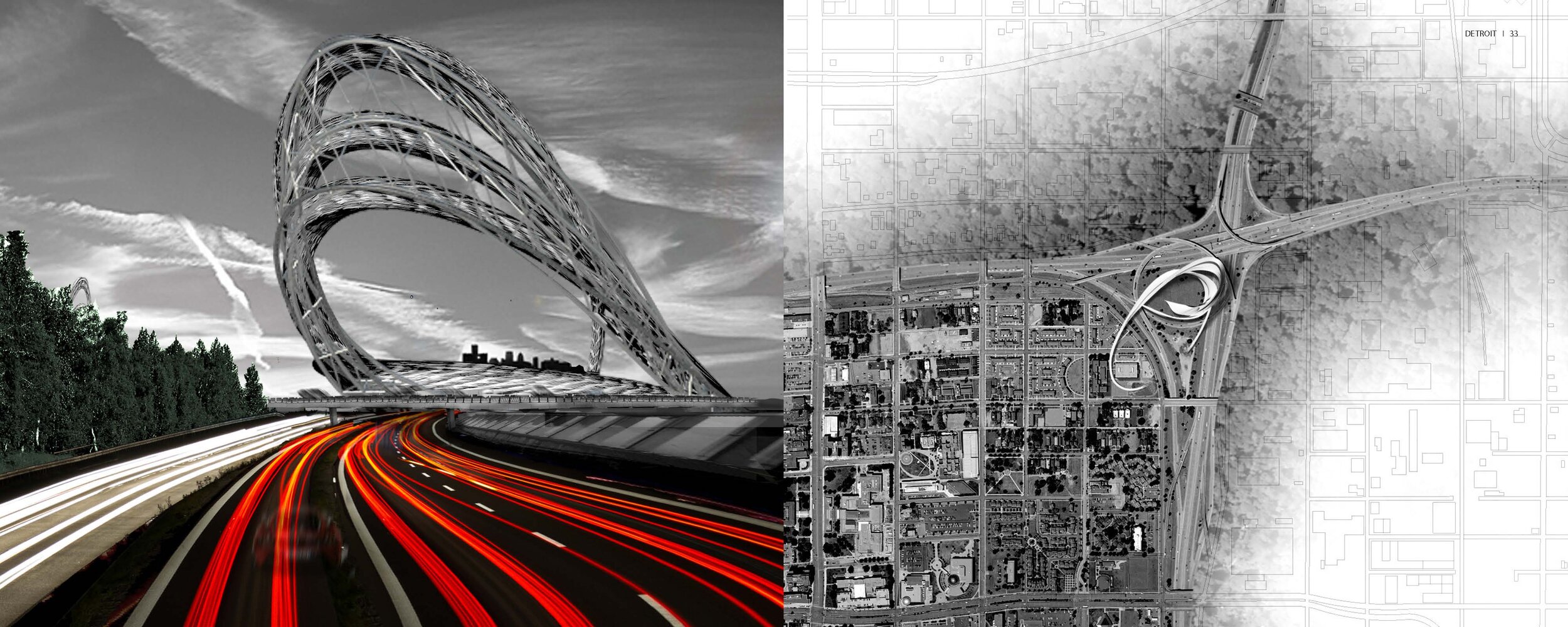
Motopia
Problematique: Detroit, an urban condition examined through the lens of speed and its repercussions for architecture. This approach would eventually inform both an urban strategy as well as a point specific intervention for the Evolo competition. What can we say of architecture in speed? Static in nature, is it rendered irrelevant? The modern city is characterized by a great divergence between the scale of architectural form and the urban dimension. Detroit’s lifeline is its infrastructure.
Detroit is not about corridors, but is rather a city of routes to destinations. At the urban level, we play on this distortion of speed to redefine the urban image. The City of Detroit is defined as a series of nodes punctuating an otherwise streamlined path. Each node hosts a significant amount of residual land with which to root our interventions. The visual noise along the path is reduced according to speed of travel, creating an almost seamless transition from place to place through non place.
Each node hosts a significant amount of residual land with which to root our interventions. The visual noise along the path is reduced according to speed of travel, creating an almost seamless transition from place to place through non place.
Formal Distortion in Speed
Our connection to physical distance and the material is distorted-shrunken- in speed. As the driver speeds up, distances shrink, architectural information dissolves into speed, reducing the observer’s knowledge to a grasp on height, rhythm and colour.
Speed in km/hrDetroit Speedscape I: The speed that car travel offered disturbed the hierarchy of the city versus periphery by favoring the edge.
Detroit Vacantscape: Formerly industrial and residential, these vacant pockets are weakly engaged with the living city, unnoticed by the Detroiters that zoom past on raised or sunken speedways.
Detroit Speedscape II: As Detroit sped up, the center fell behind, and a new Detroit emerged scuplted by major highways.
Detroit Speedscape III: The Vacant plots surrounding the city center are foreshortened as speed shrinks distance.
Skyscraper Campus Section_Dissipated Speed Phase two develops a single node within a larger loop - the intersection of highways 94 and 75. In a post-Fordist city, material production is replaced by an immaterial production - the production of knowledge. In this first node, we have chosen to use education to reorganize Detroit. A planar gesture mimics the highway’s language and absorbs speeding cars on off-shoots of the existing intersection. A vertical extension follows this horizontal gesture to further envelope the residual land. The result is a continuous three-dimensional loop that dissipates speed: from a high speed auto-route, to a drive-through plinth; pedestrians are then lifted to calmer classroom spaces serviced by escalator followed by static, quiet moments at the crown. Campus programming is distributed in a linear fashion along the looping tower - a conveyor belt of education.
Project: Motopia
Typology: Research, Educational
Location: Detroit
Year: 2012
Status: Master’s Project
Client: McGill University
Team: Nazanin Naeini, Emma Greer





